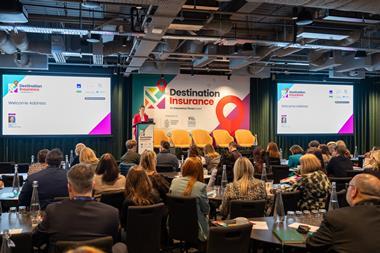Hurricane and investment losses are tipped to push up reinsurance rates.
The reinsurance market is close to a turning point. Ahead of the 1 January 2009 renewals, it is too early to be certain, but the soft market could soon be replaced by a hard market. And that means reinsurance premium rates will rise.
The reinsurance market typically expects an upturn in rates following a major disaster, such as an especially bad series of hurricanes or the terrorist attacks of 9/11. The last market turn was in 2005, when Katrina and other hurricanes caused massive losses and reinsurance rates rose. Today, severe losses caused by hurricanes are also significant.
The losses from hurricane Ike, which struck in September, were underestimated. Initial estimates by Risk Management Solutions, a natural catastrophe modelling firm, were for $7bn (£4.7bn) to $12bn, but it now expects Ike to cost $13bn to $21bn. The revised estimate makes Ike the third most costly US hurricane, after Katrina and Andrew.
Ike, even when combined with hurricane Gustav, would probably not be enough to turn this market. But in 2008 there is a second factor: the financial crisis. Insurers have suffered losses on both sides of their balance sheets – on assets as well as liabilities. The credit crunch and the bear stock market have eroded insurers’ investments. With weaker balance sheets, insurers are keener to transfer risk to reinsurers. There is, therefore, more demand for reinsurance, which combined with the hurricane losses could drive up rates. In total, hurricanes and the credit crunch are estimated to have cost the insurance industry more than $50bn. This could well be enough to turn the market.
The general reduction in economic confidence and expectations of a recession will also have an impact. In a recession, claims tend to increase: policyholders are cash hungry and claim more often and more aggressively. This too will tend to drive up rates.
The credit crunch is blamed on a fundamental mispricing of risk. Investors, in their insatiable hunger for higher yields, drove down the price of riskier investments to unsustainable levels in the bull market. That is, they undervalued risk. The current bear market has experienced a reversal: risk is now being valued more highly. This attitude could easily spread to the insurance market, causing risk to be priced more highly there too. Again, this will tend to push up rates.
Just a few weeks ago, market participants thought the soft market would continue. Now they are saying it will harden. How much it will harden is unknown, though it could be between 1% and 10%. Different lines of business will harden by varying degrees. Offshore energy rates, for example, will climb much more steeply than the market average.
The reinsurance market tends to be cyclical. The soft market has been long sustained. A turn may well be due. A confluence of factors may have brought the reinsurance market close to a tipping point. Renewals on 1 January will be studied closely.
david.sandham@globalreinsurance.com
Key points
• The soft reinsurance market may be due to turn.
• The two main factors behind the change are severe hurricane losses and investment losses.
• Additional factors are the recession and a belief that risk was previously priced too low.
• The turn is predicted to happen at the 1 January 2009 renewals.
Hosted by comedian and actor Tom Allen, 34 Gold, 23 Silver and 22 Bronze awards were handed out across an amazing 34 categories recognising brilliance and innovation right across the breadth of UK general insurance.











































